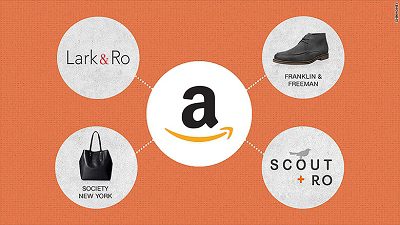Amazon has a number of powerful assets, from logistics expertise and one-click payments to its quasi-captive audience of Prime members. But one of its strongest weapons flies almost under the radar: the retailer’s growing “muscle” in private label.
“Amazon has access to more customer search and purchase data than anyone else,” said James Thomson, Partner, Buy Box Experts. “This data, properly analyzed, gives Amazon a huge advantage over all brands, most of which can at best buy scanner data from the odd retailer. With its own customer data, Amazon is able to know the product gaps and price points that are likely to succeed.”
Thomson is speaking from first-hand knowledge. Prior to Buy Box, he worked for several years at Amazon, helping to develop the e-Commerce giant’s private label business. According to Thomson, Amazon uses its private label brands to:
• Improve customer conversion on high-demand, low-converting items;
• Fill current product gaps;
• Serve as a weapon against large national brands already sold on Amazon — trying to force wholesale prices down, or seek full catalog from these brands; and
• Offer Amazon customers products comparable to national brands that refuse to sell on Amazon.
Private Label Could Grow To As Much As 10% Of Amazon Sales
While Amazon doesn’t release its private label sales data, Business Insider reported in Oct. 2017 that Amazon’s 34 private label brands could add $1 billion to its gross profit by 2019. A SunTrust Robinson Humphrey analyst quoted by CNBC said that with Whole Foods factored in, Amazon private label sales could hit $4.3 billion in 2018. Analyst Youssef Squali added that by 2022, Amazon private label sales could exceed $20 billion, accounting for approximately 5% of total sales.
As impressive as those figures are, Thomson believes the growth may be even greater: “I see Amazon growing its private label business very aggressively,” he said in an interview with Retail TouchPoints. “I could see it growing to as much as 10% of Amazon Retail sales within the next five to six years. And it’s important to note that while buying Whole Foods provided Amazon with a few more private label brands in the grocery category, the net impact of these new brands is small compared to what Amazon already has launched.”
In a December 2017 article, titled: Amazon’s Private Label Business: Another Trojan Horse, Thomson outlined Amazon’s private label tactics:
“Amazon leverages data on what Prime customers buy and starts brands based on the purchase intent of their most profitable customers. As Amazon’s third-party marketplace has grown to almost 50% of all products sold to customers on Amazon.com, they are using the data collected from customers to enter categories for which they are either not the seller of the top products (fashion) or for which they provide cost-effective alternatives to everyday items (batteries, iPhone cables, etc.).”
Multiple Tools Support Amazon Private Label
Amazon not only has data and analytical skills; the company also has the ability to execute on shopper insights. “Amazon has the massive advantage of being able to reserve its merchandising space on Amazon for its own private label brands, whether display ads or email campaigns to customers that have already expressed interest in comparable national brands,” said Thomson. “It’s basically ‘shooting fish in a barrel’ for Amazon.”
Voice search is likely to provide another tactical advantage for Amazon. “Alexa picks Amazon private label products over branded products when customers voice search for products (a trend that some way will reach majority share of search types by 2019),” Thomson wrote. “That provides Amazon with a revenue stream that cannot be touched by rivals or brands.”
Additionally, Amazon can use supply and demand to make some of its private label brands accessible only to Prime customers. “Thus customers who want to purchase these products require a Prime membership, which is yet another avenue for Prime membership growth,” Thomson wrote.
Amazon Competitors Need Access To More Data
Given this array of weapons, what can other brands and retailers do to compete? “First, these brands need to gather more customer data, especially around price sensitivity (how much more likely to buy at various price points) and customer preferences (what current product gaps are pervasive in negative customer feedback),” said Thomson. “Next, brands need to be able to launch new sub-brands much faster — in six to nine months rather than the typical two to three years most CPG firms take.
“They need to be willing to accept lower margins and smaller sales targets,” Thomson added. “Often a company launched a new brand only if it would be able to generate $1 billion in annual sales within three to five years — yet Amazon will happily launch a $200 million brand if it serves a strategic purpose other than just sales revenue generation.”
Competing brands also need to pay attention to the Amazon Marketplace. “Literally thousands of private labelers are selling products they have sourced, put on their own brands/UPCs, and are selling on Amazon,” said Thomson. These sellers “know how to play the Amazon game better than national brands, when it comes to how to launch new products, how to optimize product listings, and how to build effective advertising and social media to drive Amazon customer traffic to new listings.”













